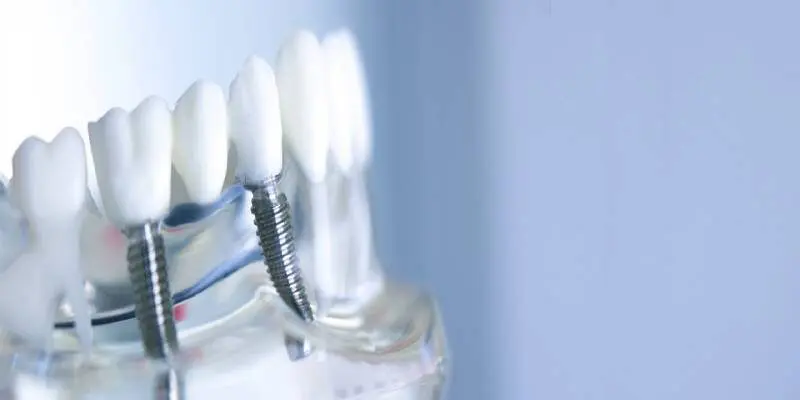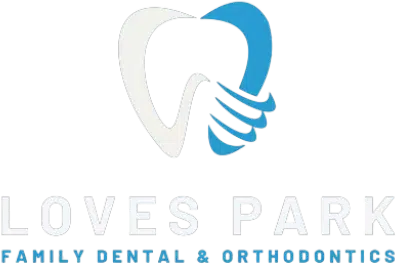As we age, some of us will lose teeth due to disease, injury, or simple daily wear. In addition to bringing about unwanted changes to a person’s facial appearance, missing teeth have a negative effect on that person’s confidence and self-esteem. With the advent of implant dentistry, however, those who are missing one, two or several teeth no longer have to accept a lifetime of embarrassment and inconvenience. Dental implants, sturdy titanium posts that are anchored directly into the jawbone and topped with realistic replacement teeth, provide the security and usability of permanently placed teeth.

Dental Implants
Dr. Patel's Smile In A Day!
![]() Dr. Patel’s Smile in a day procedure using the All-On-Four dental implant technique is the optimal solution for those who have lost or are about to lose all of their upper and/or lower teeth. With this procedure, you can come as close to having a new set of permanent teeth as is currently possible. Those who replace their dentures with All-On-Four dental implants will never have to remove their replacement teeth again for cleaning because their new teeth can be cleaned and maintained just like a natural set of teeth. The All-On-Four treatment concept was developed to provide edentulous patients with an efficient restoration using as few as four implants to support an immediately fixed and functional denture.
Dr. Patel’s Smile in a day procedure using the All-On-Four dental implant technique is the optimal solution for those who have lost or are about to lose all of their upper and/or lower teeth. With this procedure, you can come as close to having a new set of permanent teeth as is currently possible. Those who replace their dentures with All-On-Four dental implants will never have to remove their replacement teeth again for cleaning because their new teeth can be cleaned and maintained just like a natural set of teeth. The All-On-Four treatment concept was developed to provide edentulous patients with an efficient restoration using as few as four implants to support an immediately fixed and functional denture.
If you are looking at the possibility of having to wear dentures, then look no further than All-On-Four dental implants. These will allow you to never have to experience the crippling effects of loose dentures, removing you teeth at night or suffer the embarrassment of dentures slipping while talking or eating. In addition this option allows you to enjoy the foods you love and avoid the use of any messy adhesives used with traditional dentures.
Call our office today to a consultation and have a new smile in a day!
What are Dental Implants?
Dental implants are a restorative dentistry option that allows patients to replace missing teeth with ones that look, feel, and perform like their own. During the first step of this procedure, a doctor skilled in implant dentistry surgically places a titanium screw or post in the patient’s jaw. After the gums have healed around the embedded post, a replacement tooth is attached to the top of it.
Benefits and Possible Complications
Dental implants are a vast improvement over conventional dentures. They’re more stable and user-friendly than many other teeth replacement options, and because the posts that secure dental implants in place are integrated into the jaw, they also help prevent bone loss and gum recession (because the pressure of chewing on the implant’s crown stimulates the underlying bone and prevents it from deteriorating from disuse). However, some medical circumstances – including radiation therapy in the mouth area, and diseases such as diabetes — lower the success rate for implant dentistry. For that reason, patients must undergo a rigorous screening process before they may proceed with implant dentistry.
Alternatives for Replacing Missing Teeth
Patients can choose from a variety of options to replace missing teeth. In addition to dental implants, there are removable partial dentures held in place by wire clips; fixed dental bridges cemented into position by crowns placed on the teeth adjacent to an empty space; and traditional full dentures.
Single Tooth Implants
Individual implants with crowns are the best option we have available today for replacing a single natural tooth or two smaller natural teeth that are right next to each other. Traditional bridges are also used for closing a single space in your mouth, but require you to remove tooth structure from other teeth. An advantage of implants is that no surrounding teeth will be affected by their placement. Additionally, gums and bone can recede over time around a traditional bridge while single implants will help to preserve this tissue and bone from breaking down.
Implant Bridges
When you have multiple teeth missing in one or more areas of your mouth, implant bridges are a great choice for you to consider. The implant bridge can be a less expensive option as well when compared to replacing every single missing tooth with an individual implant and crown. This type of restoration is also a permanent fixed solution that won’t move around or pop in and out like a removable partial denture would, and that means not having to worry about taking it out all the time.
Mini Implants
Mini implants are just like they sound, smaller versions of normal implants. In fact, they are usually only about half the size of a normal implant. Bone grafting can only do so much as far as replacing and regenerating new bone goes, so sometimes another alternative to traditional implants is needed. That’s where the mini implants come in as they need much less bone density to be placed due to their reduced size. This is good news if you are low on remaining jaw bone or have decreased bone mass as you still may have a great option to choose with mini implants.
The procedure for placing mini implants is also much less invasive than the normal sized implant placement, which means healing is much quicker too. This sometimes even allows for these mini implants to be loaded with their final prosthesis on the same day they are surgically placed. These prostheses include overdentures and also single implant crowns and implant bridges in most cases as well. The main exception to this is in areas of your mouth where a lot of pressure is exerted on your teeth, such as in the back of your mouth. In places of high pressure, traditional implants may be a better option. Mini implants work especially well for replacing smaller teeth or your front teeth where there is much less force being placed on them. Another added benefit of mini implants is they can be a good option for someone with slower healing or medical conditions that make healing more difficult.
Implant Overdentures or “Snap-On-Dentures”
While implant overdentures are not fixed in place like All-On-Four dentures, they are still a very solid option and far superior to the traditional dentures that don’t use implants. These overdentures are also called snap-on-dentures as there are attachments within the denture and on top of the implant that allow the dentures to snap right into place. What that means is that these snap-on-dentures are going to hold tight through any type of eating and speech motions that you will perform while still being able to pop out any time you need to clean them or are heading to bed. Just like with All-On-Fours, you will be able to avoid the messy and annoying denture adhesives that are required to hold in traditional dentures. Other reasons to consider overdentures are that they have lower costs than the all-on-fours and quite easy to clean since they’re removable.
Bone Grafting
Depending on the amount of bone that you have in your jaw at the site where the implant will be placed, some bone grafting (extra bone added) may also be needed before the implant is surgically placed. The reasoning for this extra bone being added in some cases is that implants need to have a certain amount of bone around them in order to be placed. Additionally, while there are tooth sites that will definitely need bone grafting, there are also those that have abundant bone to start with and these patients can have implants placed immediately without the grafting. The decision regarding whether you are a good candidate for immediate implant placement or not will be made at your initial consult appointment with the surgeon who will be performing the surgery. 3D scans of your jaw, which will be taken at our office or the surgeon’s office, will also be useful in determining the need for grafting.
Healing Time with Implants
If the implant site does need grafting, the surgeon will not be able to place the implant until after a healing period of at least 6-8 weeks has occurred following the bone grafting. This amount of time is needed for the added bone to heal and also regenerate more new bone to form a nice solid bone mass that will hold the implant in place. Then, once the surgeon determines that the bone is sufficient, the implant or implants will be surgically placed. Following this, another 3 months or so is required for the bone around the implant to integrate with the implant itself so that it can finally be loaded with either a crown or denture.
